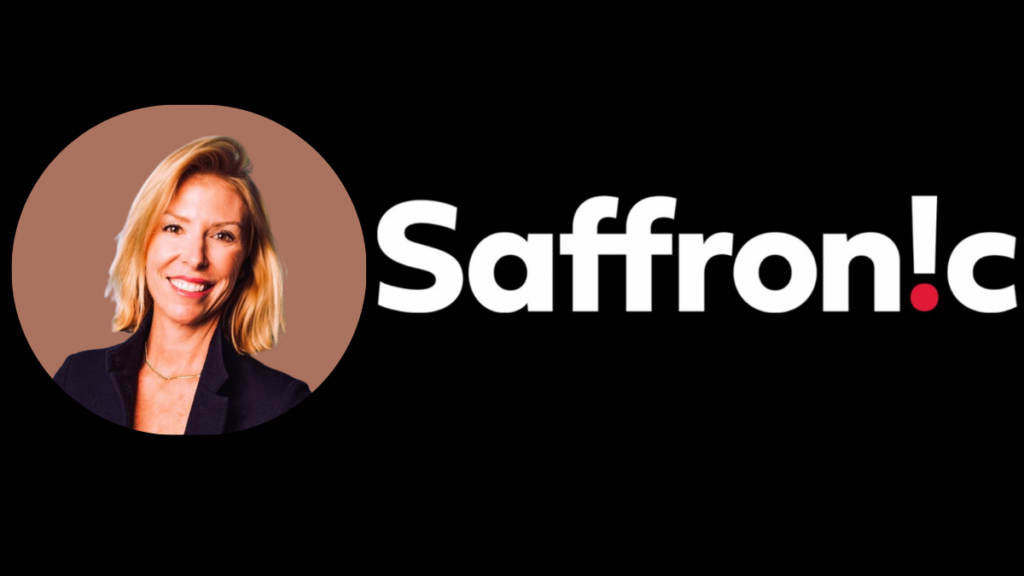
In the early morning hours, following the departure of her three children for school, AnimationXpress engaged in conversation with Skyler Mattson, the energetic CEO of Saffronic.
Having recently embarked on her journey into the realm of animation, Mattson, a seasoned veteran of the creative and design industry with nearly two decades of experience at marketing agency WongDoody and a champion of female empowerment initiatives, brings a fresh perspective to this industry.
With children aged eight, 11, and 13, Mattson humorously reflects on her inadvertent preparation for her current role, having watched every children’s show imaginable on repeat over the past 13 years. Her transition into animation took on a personal touch when she shared Saffronic’s work on DreamWorks’ Dragons: The Nine Realms with her family, earning her newfound cool points in their eyes.
We got chatting with her to learn more about how she plans to leverage her experience in creative strategy and branding to drive growth in the animation and gaming sectors, what excites her the most about leading Saffronic, her primary goals and priorities in the short and long term as the CEO, unique opportunities and challenges in leading Saffronic with operations in the US and India, insights into Saffronic’s plans to expand offerings and attract new clients, advocating for diversity and inclusion within the animation industry, upcoming projects or partnerships, and much more.
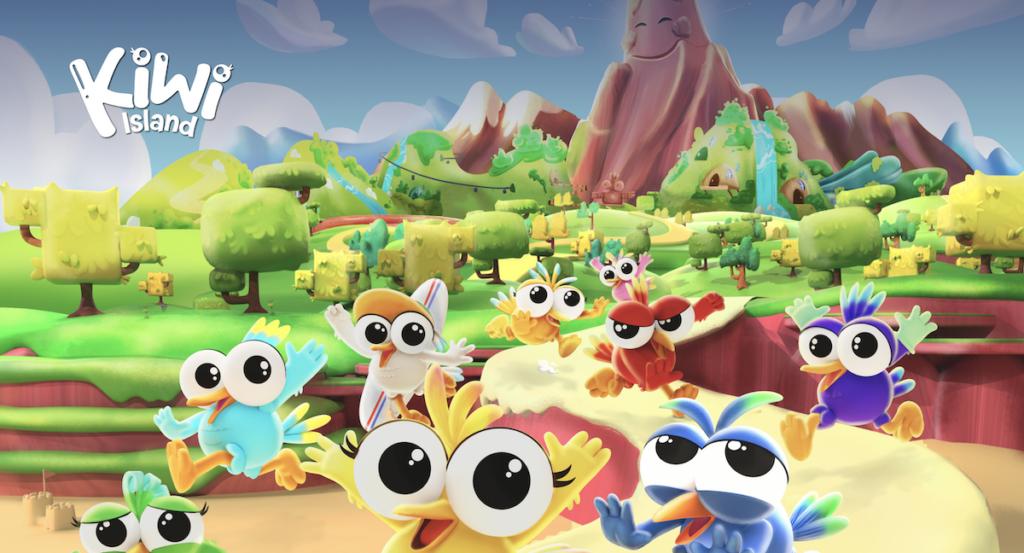
Here are the excerpts from the interview:
With over two decades of experience at WongDoody, what inspired your transition from the creative agency world to becoming the CEO of Saffronic?
Well, I always wanted to do storytelling and entertain people, and I think marketing is one way to do that. So it felt like a natural progression in my career to step deeper into the creative side of production with animation. Being a part of WongDoody which is the global experience and design unit for Infosys, I had been exposed to working with teams in India since 2018, and I knew in my next career step that I wanted to stay tied to India because the culture is so rich, the talent is so dedicated and so passionate. This opportunity came, and it tied my love of India with my love of the creative process and storytelling.
Did your experience at WongDoody give you any insights into the animation field?
A little bit. While at the advertising agency, we exclusively created animated commercials for products like Nerds and Nerds Rope. This exposed me to the intricacies of animation production, including the detailed process involved in crafting a 30-second commercial. However, one notable difference between advertising and animation is the pace. In advertising, decisions are made swiftly, and commercials must air according to a predetermined schedule. In contrast, animation projects can span several years, sometimes even a decade. Initially, I found this prolonged timeline challenging, but I’ve come to appreciate how it allows artists to invest time in perfecting every detail, resulting in truly remarkable work.
How do you plan to leverage your creative strategy and branding expertise to drive growth at Saffronic?
I plan to expand our services beyond television episodic production. We have already built a strong reputation in television episodic production, particularly with successful shows like Gabby’s Dollhouse on Netflix. While we currently focus on bidding for feature films and have a gaming division, I see an opportunity to enter the advertising and commercial space. With our experience in gaming, particularly in Unreal Engine, we can offer high-quality CGI assets for commercials, tapping into a growing market demand.
Additionally, I aim to explore opportunities in the virtual worlds arena, which I prefer to call “virtual worlds” rather than the “metaverse.” Industries such as automotive and real estate require virtual visualisation to enhance customer experiences. Our artists possess the necessary skills for such projects, and I envision positioning Saffronic as a partner in providing virtual world solutions.
Moreover, leveraging our partnership with Tech Mahindra, I intend to explore new industries like real estate, healthcare, and life sciences.

It’s been almost nine months since you joined Saffronic. What excites you most about leading Saffronic, and what sets the company apart from its competitors?
That’s such a great question. I’m most excited about the strong foundation and collaborative spirit that the company was built upon. Joining a team with such a long-standing legacy of trust and relationships with clients has been truly rewarding. I’ve been fortunate to work alongside seasoned professionals like our studio directors, Prabhakar Samabandan and Kumar Chandrasekaran, and our senior VP business development, Kristy Scanlan, who all bring years of experience from Technicolor, and have fostered a culture of passion and dedication among our team members.
What sets us apart from competitors is our unique approach to client relationships. Despite being a relatively young company, we have deep-rooted connections with clients like DreamWorks, which was our very first client. Our hands-on approach to client engagement, with key executives like Scanlan, our executive creative director Kevin Johnson, and me based in Los Angeles, allows us to provide seamless communication and support. This proximity to our clients enables us to address any concerns or challenges in real-time.
Furthermore, our ability to navigate potential communication barriers and time zone differences between our Los Angeles and Chennai teams has impressed our clients. We prioritise transparency and open communication, ensuring that any issues or obstacles are addressed promptly and collaboratively.
What are your primary goals and priorities for Saffronic in the short and long term?
Our primary goal at Saffronic is to grow strategically by seeking out projects that expand our portfolio and challenge and stretch our skill set. This growth will not only benefit our parent company, Tech Mahindra, but also provide exciting opportunities for our artists to develop and showcase their talents across a variety of industries.
However, amidst our growth ambitions, our top priority remains delivering quality work on time. We are committed to exceeding our clients’ expectations and ensuring that every project we undertake reflects the highest standards of craftsmanship and creativity. We encourage our artists to infuse their own creative flair into their work, going above and beyond to add that extra touch of magic to every project.
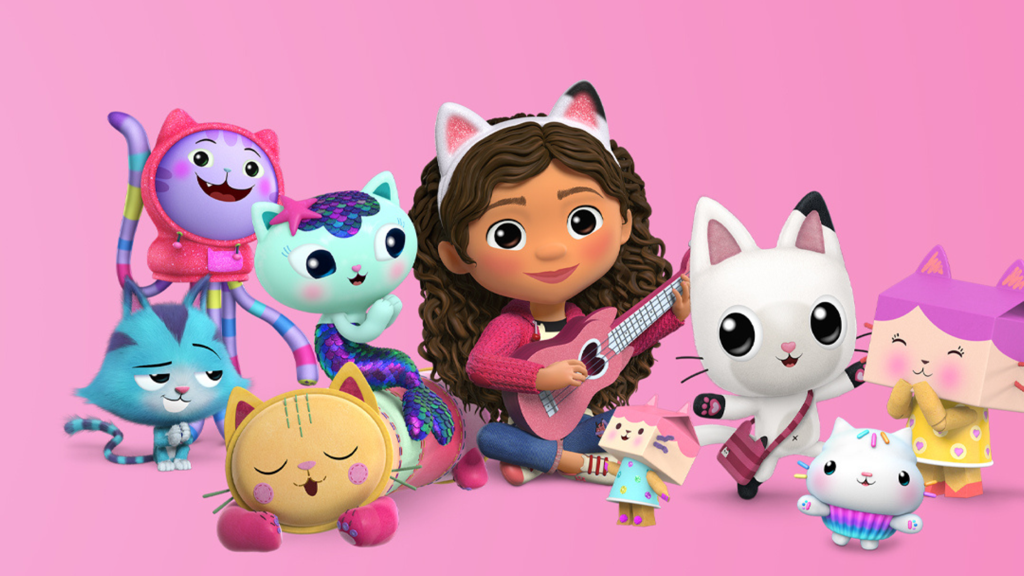
Having joined around the time when the writer’s strike was beginning, how did you manage to navigate through that challenging period?
I think I joined at a pivotal moment, one that could be viewed in two ways. On one hand, it might seem like the worst possible time, given the slowdown our industry was experiencing, compounded by the onset of the writer’s strike. The preceding year had witnessed a surge in content creation due to the pandemic and the emergence of numerous streaming platforms. However, with the market now reassessing its needs and streamlining its offerings, there’s been a reluctance to take risks on new projects or studios.
Nonetheless, I choose to see it as an opportunity. With nowhere to go but up, I believe this period presents a solid foundation for growth. As the industry rebounds, the demand for engaging content will persist. People will always need to be entertained, they will always want fresh, delightful content. So, despite the challenges, I’m optimistic about the future prospects for Saffronic.
Are you planning to develop your own IPs, or will you continue focusing solely on service work for now?
Developing our own intellectual properties (IPs) is definitely a long-term goal for us. We’ve been laying the groundwork and fostering talent within our team, thanks in part to Kevin Johnson, our executive creative director, who brings decades of experience from teaching at CalArts. Through regular workshops and upskilling initiatives, we’re nurturing our creative potential.
So, while we continue our service work, the desire to venture into creating our own IPs remains strong. Stay tuned to see what Saffronic brings to the table in the coming years.
Amazing. So, what are your thoughts on the talent pool in India? You mentioned Johnson flying down to upskill them, but what about the new talent you’re trying to attract?
There’s incredible talent in India across animation, gaming and VFX. The teams here are incredibly dedicated and passionate about delivering their best work. They’re artists at heart, drawn to animation by their creative streak. Moreover, there’s a keen interest in innovative techniques and technology, creating a unique intersection of artistry and technological curiosity. This blend fosters lifelong learners who are eager to upskill and embrace new techniques, a trait that’s particularly special and perhaps unique to the Indian culture.
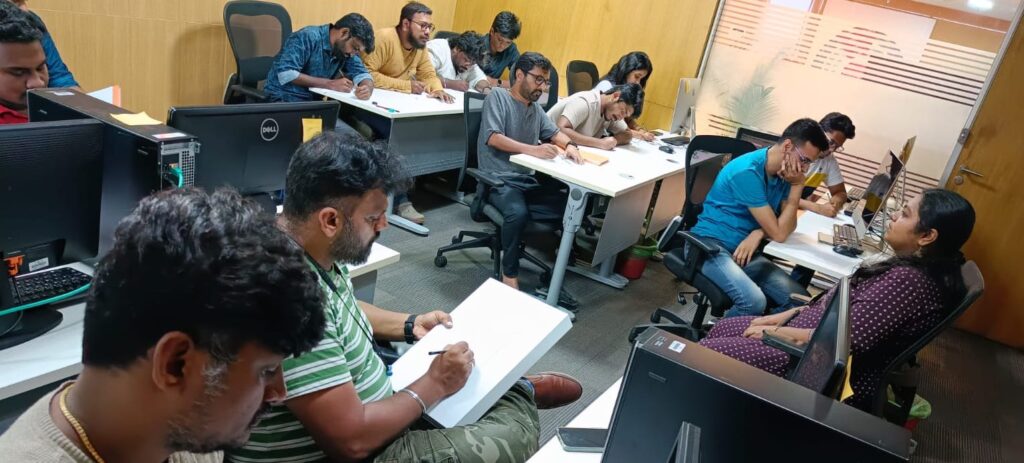
Are you finding it easy to recruit talent with the right skill sets, or do you have training programs in place?
Recruiting talent hasn’t been challenging, thanks to the reputation of our leadership team and our longstanding presence in the industry. However, while we haven’t implemented a formal internship or entry-level program yet, it’s something we’re actively working on. We’re eager to bring in fresh talent and provide them with opportunities to upskill and grow. We believe that fresh perspectives often lead to the best creative thinking, free from the constraints of corporate processes. So, we’re confident in our ability to quickly train and integrate new talent into our team.
Moving on, I heard about your gaming division. Any updates on the gaming titles you’re currently working on?
Yes, the gaming division is indeed an exciting venture for us. It stemmed from a strategic response to the slowdown in the animation industry. Kristy Scanlan brought valuable experience from her years in the gaming industry, along with strong connections. She had previously collaborated in gaming projects with Kumar, and Bhanu (Gonnabattula BhanuPrakash), creative head of our games division.
We officially launched the gaming division in October 2023, and we’ve already secured partnerships with three key clients: EA, 2K, and Gearbox. While I can’t disclose the specific titles we’re working on yet, I can tell you that they’re all AAA titles—highly successful and well-known in the industry. It’s incredibly gratifying to witness the rapid growth and success of our gaming team. We’ve been conducting tests for new companies, and the feedback has been overwhelmingly positive, underscoring the level of quality we’re capable of delivering.
Are the gaming teams based in Chennai or Bengaluru?
It’s a mix, but we’re primarily leveraging a hybrid work model to attract top talent from the best cities. While we have a concentration of gaming talent in Bengaluru, we also have team members in other cities, whereas most of our animation talent is in Chennai. This diversity allows us to tap into different skill sets and foster collaboration across teams.
This diversity in talent distribution is crucial for us. We’ve observed that our clients, even in the television episodic realm, are increasingly interested in utilising Unreal Engine for its real-time rendering capabilities. Unreal Engine allows for quick visualisation of changes, which is highly advantageous. As part of our strategy moving forward, we’re leveraging the skill sets of our gaming team and integrating them with our animation team. Soon, we’ll be delivering television content created using Unreal Engine, demonstrating our commitment to innovation and cross-disciplinary collaboration.
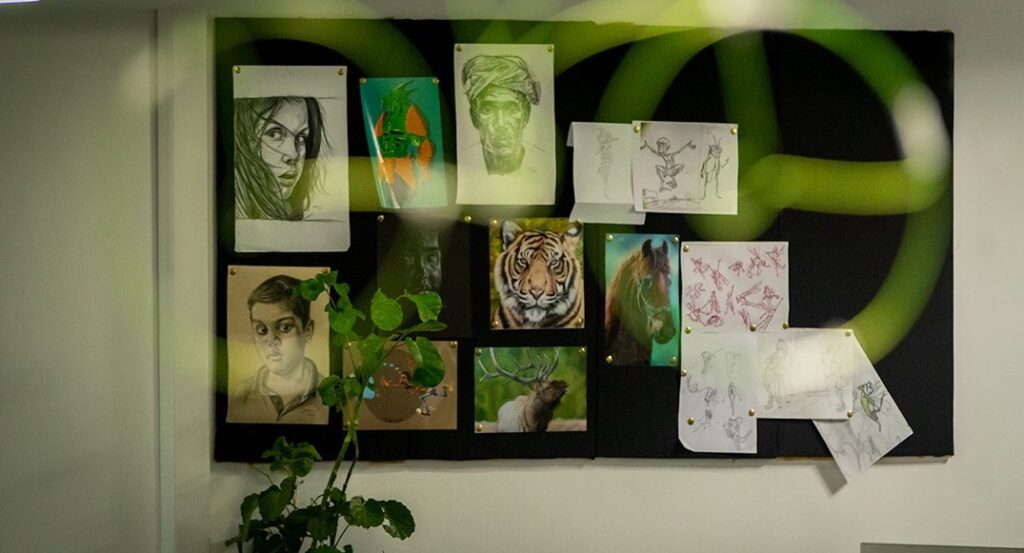
Do you plan to venture into VFX and virtual production as well?
While it’s not an immediate focus, it’s certainly a natural progression for us. If clients express a need for VFX or virtual production services, we’re well-positioned to deliver, leveraging our existing relationships and expertise.
You’ve been actively involved in promoting gender equality and advocating for women within various initiatives (#TheReal10 and #IPumpedHere) and organisations. How do you plan to continue advocating for diversity and inclusion within Saffronic and the animation industry?
It begins with an open-minded recruitment strategy that prioritises interviewing diverse candidates and building a culture that values and embraces a range of experiences. We recognise the importance of neurodiversity and strive to create an inclusive environment. While gender diversity is crucial, I believe we still have work to do in terms of increasing the number of women at Saffronic. We often hold women’s gatherings to discuss the unique challenges women face, particularly regarding motherhood, which can often lead to women leaving their careers.
One solution is to offer a flexible work environment, allowing women to work from home or choose hours that suit their needs, especially around childcare responsibilities. I strongly support this approach to ensure women can balance their personal and professional lives effectively.
It’s also essential to be intentional about having women in entry-level and promoting them to leadership positions. While we’ve made progress with some female leaders like Dipika Das, our creative head of animation, we aim for more representation at all levels of our organisation.
My hope is that in the coming years, we’ll see more women in leadership roles across our studio, not just in one department. This commitment to diversity isn’t just the right thing to do; it also leads to better outcomes for our clients, as diverse teams bring varied perspectives to the table.
Can you tell us more about any upcoming projects Saffronic is currently working on, or any that you’re particularly excited about?
Absolutely! One project that I’m particularly thrilled about is our collaboration with Trioscope on two feature films, the first of which just launched its trailer on YouTube. This project, titled Mary Margaret Road Grader, is truly unique in its approach. We partnered with Trioscope, a company known for its proprietary technology that combines live-action footage with CG environments and stylised treatments.
In Mary Margaret Roadgrader, we worked with live-action actors filmed on green screens and then seamlessly integrated them into visually stunning CG environments. What’s especially exciting is the creative partnership behind the project, as it was written by George R.R. Martin, the renowned creator of Game of Thrones. This post-apocalyptic indigenous tale is based on the work of the late science fiction author Howard Waldrop and promises to offer audiences a captivating and visually striking experience.
Our team at Saffronic is incredibly proud of our work on this project. This project showcases our ability to handle adult themes and deliver exceptional quality, and I believe it will redefine how people perceive Saffronic in the industry.
Can you share the current team strength at Saffronic? Are there any plans to expand into other cities?
Currently, we have around 300 team members, with approximately 250 dedicated to television episodic projects and an additional 50 focused on gaming. We anticipate significant growth in the gaming division over the next year.
We recognise that talent is not limited to specific locations like Chennai or Bengaluru. Therefore, we remain open to expanding our presence wherever talent thrives. With the support of Tech Mahindra, we have the flexibility to establish offices in various locations worldwide, leveraging their global network to accommodate our growth swiftly and efficiently.
How do you see the future of work evolving at Saffronic, especially considering the shift towards hybrid models?
As we continue to grow, our work environment at Saffronic will become increasingly hybrid. Currently, we’re not located on the Tech Mahindra campus in Chennai, but by the end of April, we’ll move there. The new space has been custom-built for us, featuring amenities like a viewing room for showcasing our work, a board room, and even a motion capture room. However, we intentionally didn’t build it out to accommodate every single person, as we value flexibility and recognise that people do their best work in different environments.

I strongly believe in the importance of in-person interaction for fostering culture and camaraderie. Being able to quickly collaborate and solve problems with a colleague sitting right next to you is invaluable. At the same time, remote work offers productivity benefits, especially when it comes to minimising distractions and allowing for focused work.
This approach is particularly beneficial for promoting gender equality and supporting mothers who may require more flexibility. By allowing for a mix of in-person and remote work, we’re ensuring that everyone has the opportunity to thrive in their roles. Our priority remains delivering the best work for our clients, and we’re confident that this hybrid model will contribute to our success as we continue to grow.
What advice would you like to give to professionals looking to enter the animation industry or join Saffronic?
My advice would be to never lose sight of your passion for storytelling and creativity. Remember why you chose to be an artist in the first place. The joy of bringing stories to life is what fuels our creativity and makes our work truly meaningful. Stay connected to that sense of wonder and excitement, and it will guide you through your career in this industry.

